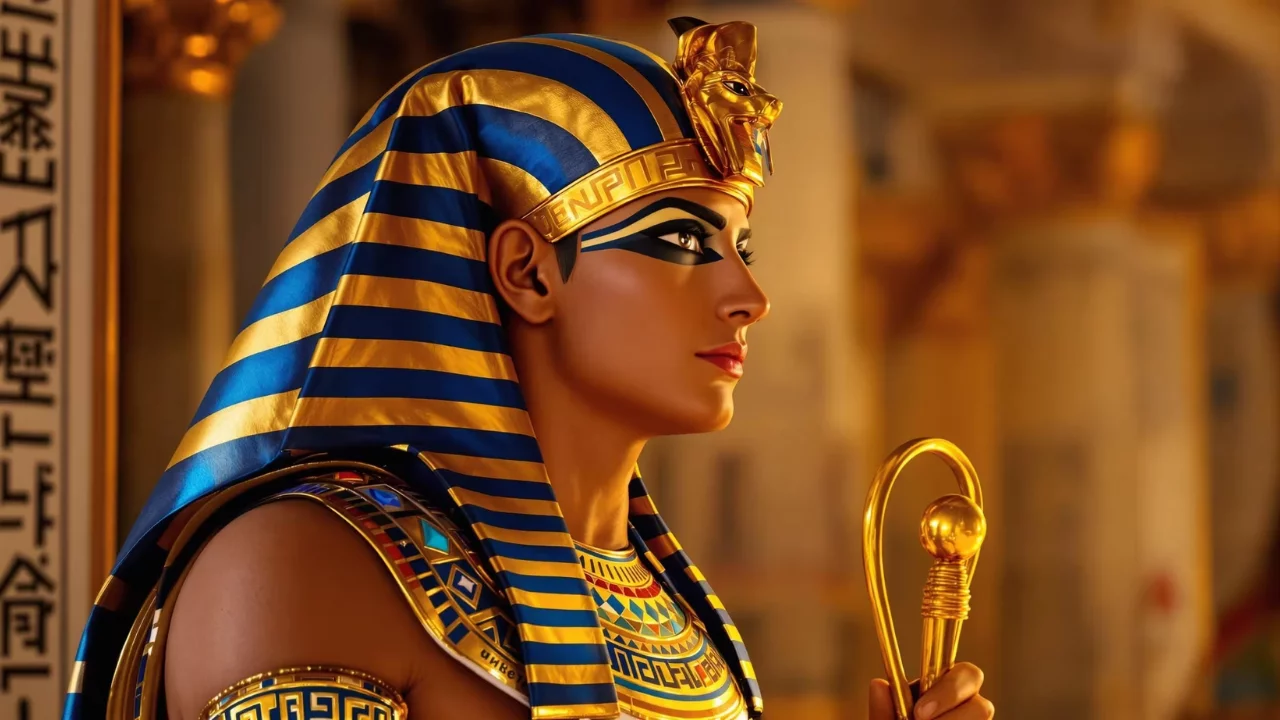
The black lines around the eyes of pharaohs and queens depicted in ancient Egyptian frescoes have been interpreted for centuries not only as an attractive aesthetic, but also as a deep spiritual meaning and cultural symbol. However, as a result of scientific research conducted by French scientists in the 21st century, it became clear that these antimony lines were not only decorative, but also the first medical technology that served human health.
Unexpected discovery by Louvre scientists
A research team led by scientists Philippe Walter and Christian Amatore, working at the Louvre Museum in France, decided to study the chemical composition of cosmetics used by the ancient Egyptians. They achieved an interesting result: two synthetic compounds of lead that do not occur in nature - laurionite and phosgenite - were detected in the composition of antimony paint. This in itself shows that the Egyptians at that time were able to control chemical reactions and create new substances through synthesis.
But the most surprising thing is that these substances stimulate the production of nitric oxide in the body. Studies conducted using microelectrode devices have shown that a microdose of lead can be absorbed through the skin and activate the immune system by 240%. Today, this is called an immunomodulator.
Protection against Nile epidemics
The annual flooding of the Nile River brought the Egyptians abundant harvests, but at the same time it posed a great risk of spreading infections. Blindness due to eye diseases such as conjunctivitis and trachoma was widespread. The Egyptians prevented infections by applying special protective cosmetics to their eyes during the flood season. Archaeological finds, especially cosmetic boxes and papyri, testify to this.
A Cultural and Religious Symbol
In addition to its medicinal benefits, antimony also had religious significance. For the ancient Egyptians, the Eye of Horus was a symbol of healing and health, and this symbol was expressed through eye makeup. Egyptians painted their eyes, not only to protect their eyesight, but also to seek protection from evil spirits and disasters.
The green malachite pigment was believed to be associated with Hathor, the goddess of health and fertility. The choice of these colors also reflects the spiritual understanding behind each paint.
Ancient Chemical Solutions
The synthesis of antimony was based on the knowledge and experience of the Egyptians, who were ahead of their time. They reacted sodium salts and lead ores from soda lakes to synthesize new chemical compounds. This process is based on complex chemical technology and practical knowledge.
In addition, the Egyptians used these substances depending on the season and monitored their effectiveness. The papyri contain individual recipes and instructions for each disease, which shows that practical observation has become a true science.
A necessary tool for every person
Antimony was used by all levels of ancient Egyptian society: from the pharaohs to ordinary workers. The black stripes protected against light and ultraviolet rays, and its oily composition protected the eyes from dust and small particles.
For the ancient Egyptians, antimony was necessary not only in worldly life, but also in the afterlife: a set of cosmetic products was always found in tombs. It was believed that a person would need it in the afterlife.
Summary
The ancient Egyptian civilization was able to create a complex system for human health based not only on observations, but also on scientific solutions. They practiced prevention thousands of years before modern theories about infections. Antimony was not only a decoration, but also the first medical protection in human history. Read “Zamin” on Telegram!
Ctrl
Enter
Found a mistake?
Select the phrase and press Ctrl+Enter Related news
Information
Users of Меҳмон are not allowed to comment this publication.
Users of Меҳмон are not allowed to comment this publication.














